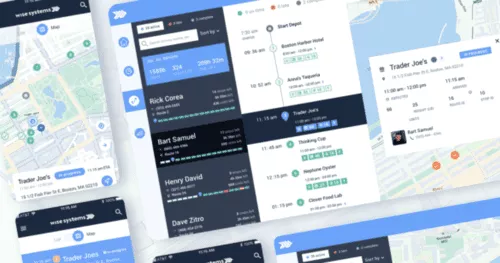In a recent study by Cerasis, research found that of the major trends in last-mile delivery for 2020, many centered around the idea that digital and technological features will serve as a competitive advantage for most supply chains. Software such as a delivery route planner will allow companies to streamline their last-mile delivery processes, improve the driver experience, while also creating a refined customer delivery experience.
For more information about delivery route planners, see the Wise Systems white paper, Predictably Unpredictable: Transforming the Chaotic and Costly Last Mile.
Frequently Asked Questions
What is last-mile delivery?
Last-mile delivery refers to the final stage of the delivery process, where goods are transported from a transportation hub or fulfillment center to the end customer’s location. It is often considered the most challenging and costly part of the delivery journey due to the complexity of navigating urban areas, dealing with traffic congestion, and making individual stops.
How can a delivery route planner save me money?
A delivery route planner can optimize the sequence and structure of your delivery routes, resulting in several cost-saving benefits. By efficiently organizing the order of stops, it reduces travel distance and time, minimizing fuel consumption and vehicle wear-and-tear.
It also helps to minimize the number of vehicles required, reducing labor and operational costs. Moreover, route planners consider real-time traffic information, allowing you to avoid congested areas and make timely deliveries, further enhancing efficiency and reducing costs.
What’s the difference between a static and dynamic delivery route?
A static delivery route remains fixed and doesn’t change regardless of external factors. It is predetermined and designed to follow the same sequence every time, regardless of traffic conditions, delivery demand, or other dynamic variables.
In contrast, a dynamic delivery route is configured each day based on various factors such as traffic updates, customer requests, and delivery priorities. Dynamic routes leverage technology and algorithms to optimize the most efficient path, considering current conditions and ensuring timely and flexible deliveries. This flexibility allows for better responsiveness to changes and ultimately improves overall delivery efficiency.










